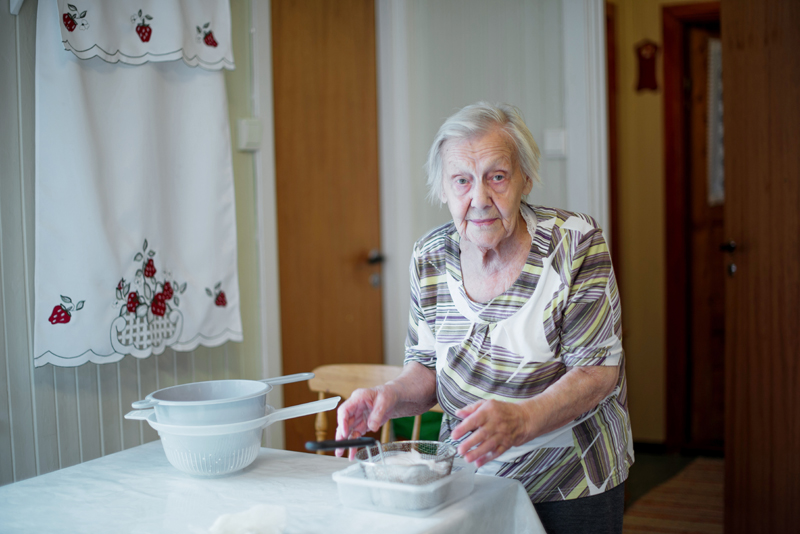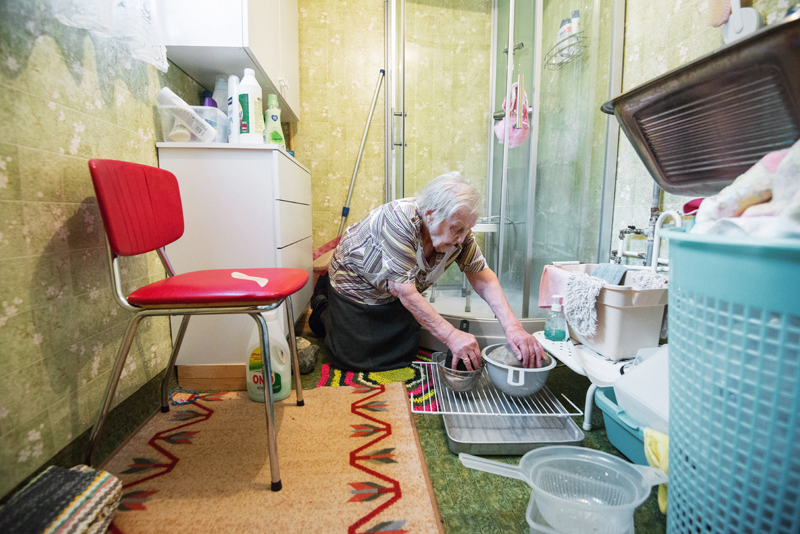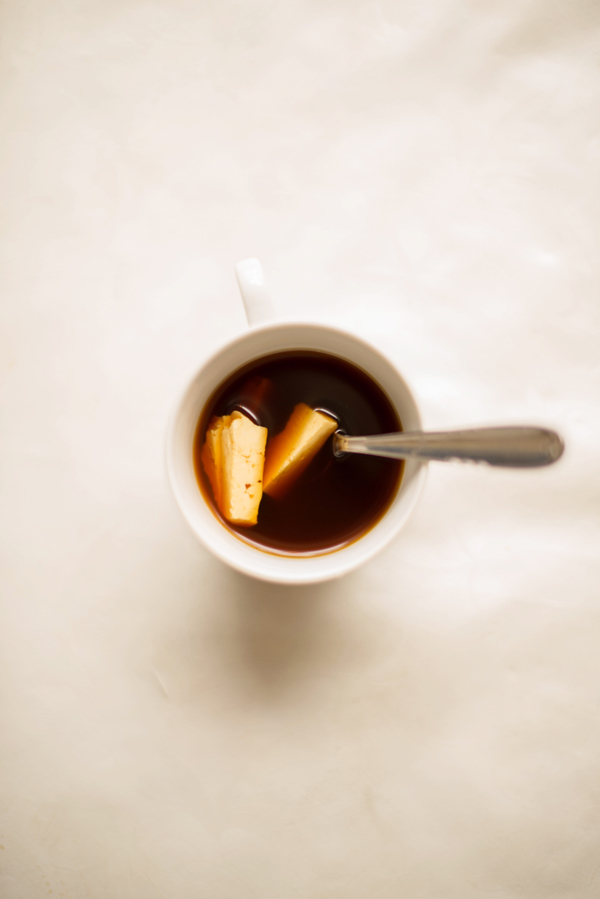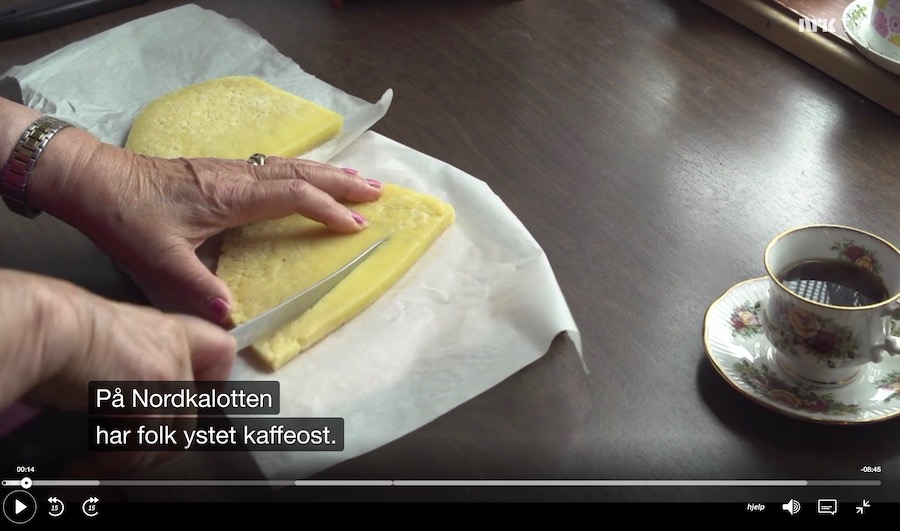Elise Helene makes coffee cheese
– There are not many people who can make coffee cheese now. It’s gone. But I use to make it, says Elise Helene Solberg from Kåfjorddalen.
Coffee cheese
5 liters of H-milk
1 teaspoon cheese curd
A little salt
I use to have some lukewarm water in the pot before I pour the milk in. Now we are going to heat the milk so that it reaches the temperature of freshly strained milk. You didn’t have temperature gauges in the old days. Then they used freshly strained milk, because it was suitably warm. It’s like 30-35 degrees today.
Once we have got the milk to the right temperature, we add a teaspoon of cheese curd and a little salt, and then we stir it well. Then it should stand for half an hour, but it should not stand on the hot plate and it should not be touched. After half an hour, we should take it out. Then we first mix the mass together into a ball. We divide the ball in half, because we are going to make two cheeses.
After we have picked up the cheese, we will press them. Then we put them in clean, wet cloths. The cloth must be wet otherwise they will stick to the cheese when it dries.
Now it must be under pressure for a day, in a place where it is not freezing. If it freezes now, it will become watery. I now have the stone under the sink here that I can use to press with. Here they can stand.
When the cheese has been pressed, it must dry for a day, otherwise it will dissolve in the coffee. I use to dry them further in the fridge. It must be turned around often so that it does not stick. It must not be placed in plastic, it must be in a cloth or something like that. Then it can last a long time.
People had a lot of hard work before ten. If it was hard work, you knew you got coffee cheese. The coffee cheese was powerful. If the workers got cheese in their coffee, then they could work longer. In the autumn it was busy. They had to get the dry hay in before it rained, and then they didn’t always have time to eat. Then the coffee cheese would be good to have. Most of them carried the hay in. Those who had horses rode with horses. We young people stepped on the hay. Yes, everyone was there. From largest to smallest. That time is over now.
Text and photo from the book “Syv sorter – stories from the kitchen bench” produced by the Center for Northern People in collaboration with Reni Jasinski Wright.







